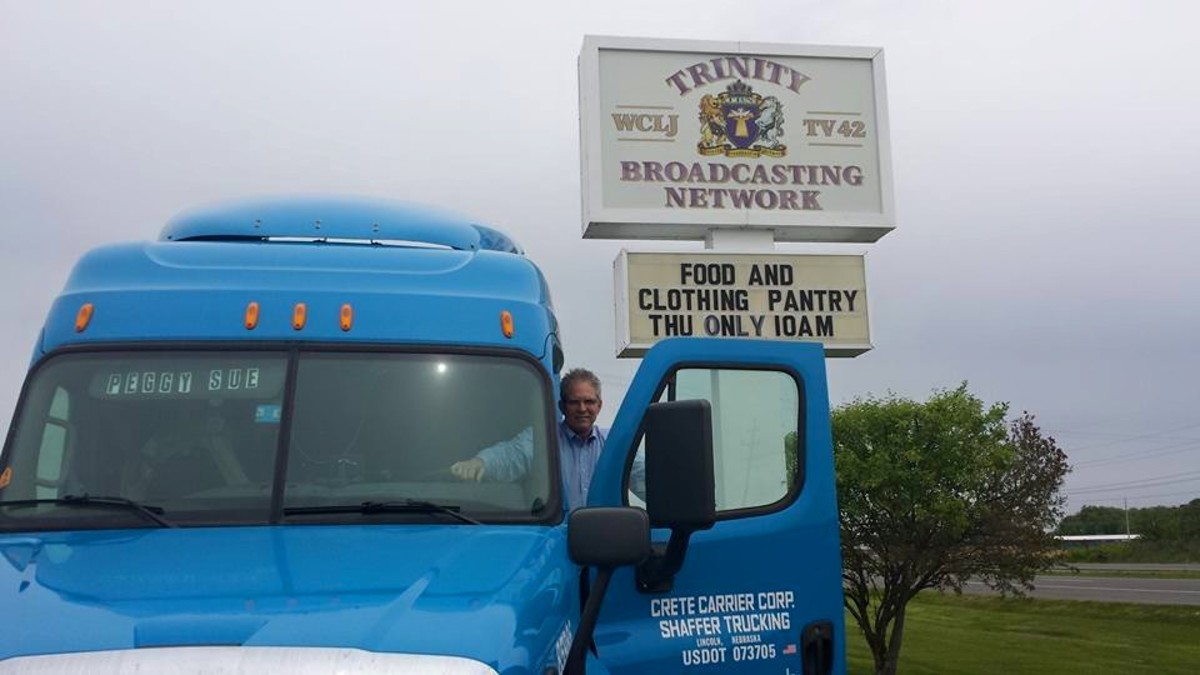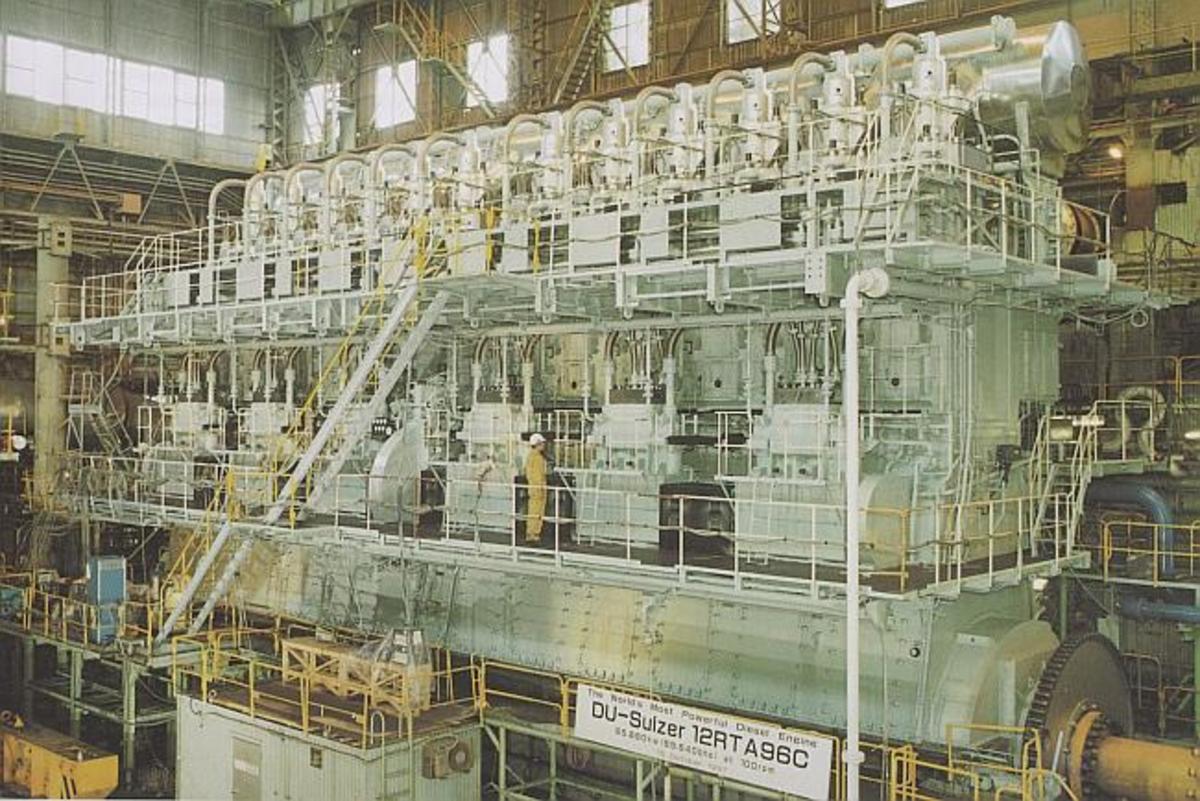Semi Safety and Statistics

GPS makes travel easier.
What picture pops into your head when you hear the term “semi driver”? Fairly or not, many of us think of a grease covered man, uncultured and uneducated. We think of horror movies like Joy Ride and Duel, where crazed semi drivers target unsuspecting motorist with intent to kill. Or we think of a book like Stephen King’s Maximum Overdrive where the trucks themselves come to life and try to massacre the whole of humanity.
We think of serial killers like Keith Hunter Jesperson and Robert B. Rhoades, who found a home in the truck driving industry and the anonymity of endless travel. We think of the last time we were driving and a semi bullied us off the road. We think of recent events: the tragedy in California with a FedEx truck and a busload full of youths, the Wal-Mart truck crashing into a limousine full of comedians in New Jersey.
If you’re like most people, when asked to conjure the image of a truck driver, you don’t think of anything positive. You don’t think of the thousands of trucks you safely share the road with each day. You don’t think of the convenience of next day delivery. You don’t think of the thousands of man hours, the blood, sweat, and tears that goes into having all your delivery needs met at a moment’s notice.
The purpose of this article is to examine the perception of truck driving versus the reality. Who are these people that bring us all of our stuff? Do they deserve our hatred or our praise?
CDL exam preparation
Public Perception
According to the U.S. Census Bereau, Americans travel a little under 3 trillion miles each year in vehicles, a staggering statistic. Of these 3 trillion miles, semi drivers make up a large demographic. Think of it this way, how many times are you on a road without a semi in view? Probably not often. Regardless of the time of day or the geographical location, there is always a semi in the vicinity hauling freight somewhere.
The truth of the matter is they are so common we probably don’t even notice them most of the time: until they intrude on our space, do something erratic, or are involved in a crash. But when we do see a semi crash, inconsistent driving behavior, or an inconsiderate semi driver doesn’t check his or her mirrors and nearly runs us off the road, this we remember forever.
In this way, the hatred of semi drivers works much like most any prejudice. Opinions of the whole are based on the actions of a few, and all the while, with drivers working difficult hours with little rest, people are complaining about their products not showing up on store shelves in time. Contrary to popular belief, our favorite items do not get to stores by osmosis, and the trucking industry is as big a factor in their arrival as any.
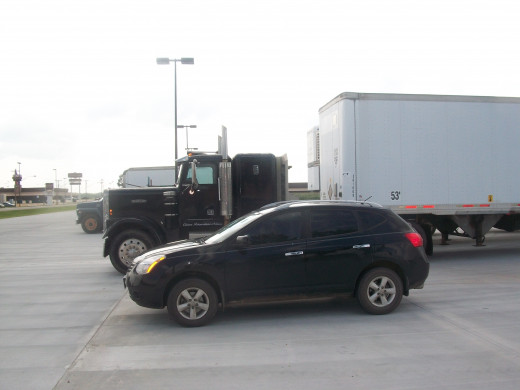
Safety
How Safe do You Believe Truck Drivers are?
The art of driving
Mortality Statistics
So, statistically speaking, how dangerous are large trucks? The answer is very. With the majority of tractor trailers exceeding 75 feet in total length, reduced stopping ability, immense cargo weights, and limited visibility, the potential for catastrophic accidents is palpable. Just think about the streets you navigate on a daily basis in your personal vehicle. It can be hazardous, but just imagine this scenario pulling a 53 foot trailer.
What happens when a semi crashes? According to Truckaccidents.org, someone usually dies. With the exception of small incidents like low speed fender benders, 98% of semi crashes result in a fatality. Comparatively, in a standard vehicle crash, even a bad one, it is not uncommon for everyone to walk away uninjured, or at least for everyone to survive. The reason for this discrepancy in mortality rate is obvious: semis are huge; personal vehicles are not. Personal vehicles can stop and slow down quickly: Semis cannot. A two ton vehicle crashing into you at highway speed is a scary enough proposition, but this same scenario with a vehicle that may weigh more than your house is terrifying.
The next telling statistics to look at are comparative fatality rates of personal vehicles and semis. According to the U.S. Census Bureau, on average personal vehicles cause the deaths of 1.14 people per 100 million miles driven. Truckaccidents.org contributes large trucks to the death of 2.3 people per 100 million miles driven. Just as numbers on paper, this may not look like much, but this is the loss of human life we’re talking about, and any number above zero is unacceptable.
With fatalities caused by semis being over twice that of personal vehicles per 100 million miles driven, it is safe to say that there is a problem that needs to be addressed.
Statistics: Number of Accidents
So with the above statistics is our hatred and prejudice against semi drivers now found to be entirely justified? Absolutely not. On many levels large vehicle drivers represent the safest driving demographic on the road. The problem isn’t that semis are constantly getting into wrecks but that the few wrecks they get into result in deaths because the vehicles are so large.
Here’s an interesting statistic: you are 31 times more likely to see a crash not involving a semi than one that does. This statistic is true, but somewhat misleading, so let’s put it to scale. Vehicles that are not semis travel about 2.754 trillion miles a year in the U.S. A very conservative estimate made by the author puts annual miles traveled by semis at about 200 billion. If we scale the statistics, vehicles other than semis are about 2.25 times more likely to be in an auto accident.
In addition, almost all semi “accidents” occur at idle speed, between 1 and 3 miles per hour, usually backing or making a tight maneuver. In these scenarios, human life is rarely at risk. In comparison, a much higher percentage of crashes in personnel vehicles occur at speed.
The above statistics still don’t change the bottom line: that 98% of semi accidents occurring at speed result in a fatality and that to scale over twice as many people die per year in semi related crashes versus personal vehicle accidents, but it does establish that the demographic of truck drivers represent a safer driving community than the general population in number of crashes, and when one considers the shear mass of these vehicles and the difficulties that this represents, it is fair to say that the vast majority of those driving a big rig possess an extraordinary driving ability
Statistics: Who's at Fault?
But perhaps the most significant statistic of all is that, according to Truckaccidents.org, 75% of all semi accidents at speed are the fault of a personal vehicle and not the semi driver. The truck driving industry has done much in recent years to reduce the number of fatal accidents involving large trucks, and statistics will bear out a consistent reduction in semi accidents over the course of recent years, but no amount of education or number of standard safety procedures within the truck driving community can eliminate the X factor of personal vehicles.
With semis we have a great potential for harm. When they crash at speed, someone usually dies. Over the years many truck drivers have made errors resulting in the death of other motorists. Careless truck drivers who cause the death of other motorists usually make the front page of the newspaper and wind up in prison. They give the rest of the world further reason to vilify the truck driving community, but the statistics bear out that truck drivers as a whole represent one of the safest driving demographics.
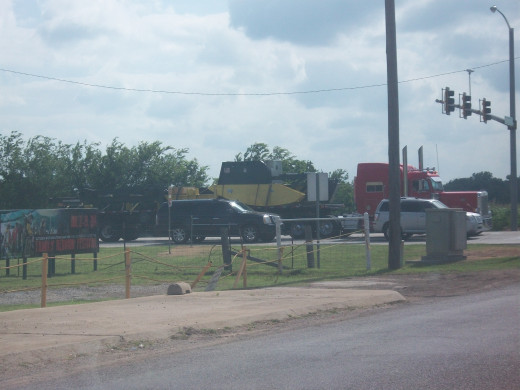
Reform
Does truck driving need to be made safer? Yes! And even if the truck driving community could go an entire year without a fatality, the answer would still be yes. We should always be looking for a way to make things safer. There are a number of things that would result in increased truck driving safety, but for every improvement there is a price. Below are just a few things that could be done.
1. Personal Vehicle Drivers Need to be Aware of Their Surroundings:
As statistically established earlier, the number one cause of semi related fatalities are errors in judgment of personal vehicles. The truck driving community is always having additional safety procedures heaped on them, and more often than not, this is a good thing, but if drivers of personal vehicles are causing 75% of fatal semi driving accidents, should we not invest more time teaching the general community what to do and not do around semis?
The general population needs to better understand the capabilities of semis: how much room it takes them to stop, visibility issues, etc. One of the best ways to impart this knowledge would be with a ride-along program. You simply can’t understand how large these vehicles are until you’ve been in one.
The problem with new programs is that they take additional money, but considering that semi accidents cost us over $20 billion dollars a year, additional semi awareness coursework would probably result in a net gain.
2. Semi Drivers Need to Spend Less Time on the Road:
One of the aspects of truck driving that is constantly being tweaked is regulation regarding time on the road. As things are, semi drivers can spend up to 14 hours working a day, 11 of which can be spent driving. A truck driver cannot return to work within 10 hours of having gone off shift.
This is a taxing schedule, but certainly doable. The problem lies not in the number of hours worked but the consistency in which this schedule is adhered to. It is one thing to work a schedule like this in a 5 or 6 day increment and have 3 to 4 days off and occasionally get a few weeks off, but when you work 14 hours a day 6 days a week for a whole year, the effect is overwhelming fatigue.
The reason for these long hours is that the truck driving industry doesn’t have enough drivers to meet society’s needs. In addition, there is a huge job turnover rate in the trucking industry. The main reason for this turnover is workload. If truck drivers were not expected to work such exhausting hours, more people would stick with the profession.
But truck companies don’t want to invest in a program like this because in the short-term they would lose money and their competitive edge in the industry. If all of a sudden a truck company starts moving less freight and giving employees more downtime, one of the immediate results would be less accidents. But another result would be diminished freight movement and profits.
Though the company would lose money in the short-term, it is this author’s belief that reasonable workloads would result in the retention of more drivers. The long-term effect would be a larger workforce and the ability to move more freight than other companies. There would be fewer accidents and a happier, healthier workforce.
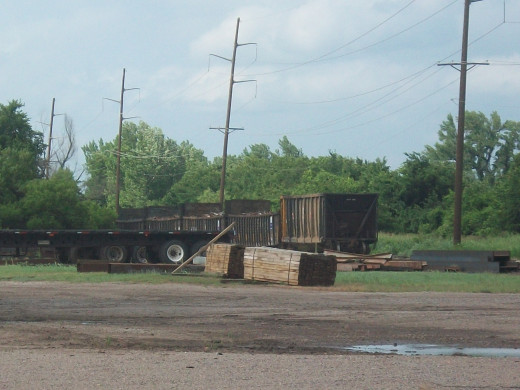
3. Less Emphasis Needs to be Placed on doing Things Quickly Within the Trucking Industry:
How do truck driving companies succeed? By doing things more quickly than other truck driving companies. When you order something what is the first thing that pops to mind? “Gee, I hope the drivers are safe.” “I sure don’t want them to be in a big hurry and cause an accident.” No! The first thing that pops into your mind is, “How fast can they get my stuff to me?”
In the truck driving industry they try not to use terms like “fast” or “quick,” because such terms might indicate recklessness. Instead they use the term “efficient.” But regardless of the nomenclature, the overall goal is to do things in a hurry. For obvious reasons, it is not a good idea to be in a hurry when driving a semi.
Yet not only is it not uncommon to get a difficult delivery schedule, the schedules are often physically impossible. When you are a driver and you don’t get your delivery schedule completed (regardless of whether or not the schedule was physically possible), you get yelled at. When you get yelled at, you worry about losing your job. When you are worried about losing your job, you make desperate decisions and don’t function properly. When you make desperate decisions and don’t function properly, accidents happen.
Dispatch and the upper-brass of the trucking companies need to set reasonable expectations for their drivers on a reasonable schedule. Even if they give a schedule that more likely than not can’t be achieved, they need to relate this fact to the driver. For example, tell him or her, “You probably won’t get this schedule done in time, but get as much done as you can in a safe fashion.”
The problem is that within the truck driving community this is not the culture. The culture is push, push, push, faster, faster, faster, and even if it’s fast, it’s still not fast enough. Driver’s need to keep in mind that no matter how much chatter you’re getting in your ear to speed up, always take your time. With retention problems in the industry, no matter how often you don’t meet schedule goals, the only thing that will ensure your termination is if you get in a hurry and have an accident.
4. Less Semis on the Roads:
Another way to reduce semi accidents is to rely less on the trucking industry for our products. Not too long ago in this country the lion’s share of freight was moved by trains. Nowadays most of the tracks are overgrown and have fallen into disuse. Yet not only is train delivery safer, it is more environmentally sound. Trains can move more goods all at once at less of an environmental impact than semis.
There are three types of truck driving: OTR, Regional, and LTL. OTR stands for over the road. OTR drivers are the ones who crisscross the whole of the nation delivering goods and are rarely home. Regional drivers cover a few states and are home a little more often than the OTR drivers. LTL stands for less than a truckload. These are the semi drivers who disperse goods to all the companies within about a 100 mile radius. These semi drivers get to come home every night.
If we relied more on train freight, put money into restoring all the old tracks and building new ones, there would be little need for OTR transport. Regional transport would still be necessary, but the workload would decrease. LTL delivery would be largely unaffected. You would still need a system for getting goods from the train yards to the stores.
Less semis on the road equals less risk to drivers. The problem with this paradigm is that it would take billions of dollars to restore the train freight system. In addition, our culture has become accustomed to getting everything right away. Train delivery, even at its best, is going to be slower than truck delivery.
Another way to have fewer semis on the road is to only use them for heavy freight. For example, a semi full of insulation, potato chips, or light bulbs just doesn’t make sense, yet semis haul these items every day. From an environmental standpoint, most semis get around 5 miles a gallon. A standard truck with a long trailer could haul these light items and get more than 20.
Semis are engineered to carry heavy freight at a reasonable efficiency. As a result, they should be used exclusively to deliver heavy freight. There are a couple of reasons why they are not. The primary reason is that trucking companies want to corner the market. They don’t want you to have other options, because that is business going somewhere else. Another reason is that most docks are set up to receive freight efficiently from semi trailers. Converting docks to also except standard trailers would take time and money.

Conveniece
Would you rather have a sustainable society or a careless society that is convenient?
Conclusion
Despite the stereotypes, the majority of semi drivers are hardworking, intelligent, and considerate. They make life as we know it possible. As laid out in this article, there are a number of ways to significantly make truck driving safer, but it is likely none of them will be done until resources necessitate it, because society is spoiled. Almost every solution given involves people waiting longer for their stuff.
You can’t have it both ways, and whether they admit it or not, most people would rather have their stuff now and problems later than go through the aggravation of converting to a more sustainable society.




